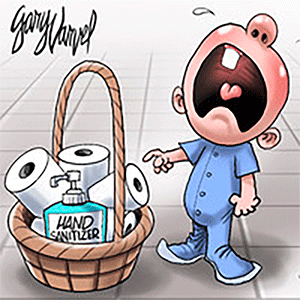Ask the Vet: Center for Pet Safety Tests and Certifies Pet Travel Equipment
Q: My seatbelt will help protect me if I'm involved in a car accident, and I want the same for my dog, Gucci, who often rides with me. What's the best way to keep him safe?
A: You are wise to restrain Gucci in the car. Not only could he be injured in a crash, but an accident could hurl him against you, preventing you from controlling your car. Unrestrained pets can also cause accidents by distracting the driver or crawling under the brake pedal.
If Gucci is small, confine him to a pet carrier secured to the backseat with a seatbelt.
If he's larger and you drive a station wagon, SUV or van, put him in a crate attached by strength-rated anchor straps to the cargo area. If he's a big dog and you have only a backseat, secure him in a harness connected to the seatbelt.
Pet travel restraint equipment is unregulated, and manufacturers are not required to adhere to any particular performance standards or even to test their equipment before they market it. So, it's not surprising that the majority of carriers, crates and harnesses do not adequately protect pets during a crash.
Fortunately, the Center for Pet Safety, or CPS, a nonprofit research and advocacy organization, conducts rigorous crash testing on pet carriers, crates and harnesses using realistic canine and feline crash test dummies. You'll be relieved to hear that CPS never uses live animals in its testing.
They publicize their test results to make it easy for you to purchase CPS-certified pet travel restraint equipment. To see crash test videos, view the list of CPS-certified products and learn about cargo area anchors, strength-rated anchor straps and harness extension tethers, visit https://www.centerforpetsafety.org/.
Q: My elderly indoor cat doesn't jump onto furniture as often as she used to, and she hesitates before she does. I have osteoarthritis, and she looks like I feel. Do cats get osteoarthritis, too?
A: Yes. In fact, osteoarthritis, also called degenerative joint disease or DJD, is surprisingly common in cats.
One study of 100 randomly selected cats evenly divided into four age groups (0-5, 5-10, 10-15 and 15-20 years of age) found that 92% showed signs of DJD on X-rays, properly called radiographs. The prevalence was similar in each age group, although severity worsened with age.
In 91 of the 100 cats, DJD was present in the legs, most often the elbows, hips, knees and hocks. The spine was affected in 55 cats. Researchers scored the radiographs for severity and learned that DJD worsens 14% every year of life.
Another study of 116 healthy indoor cats age 6 years and older revealed DJD on the radiographs of 96% of the cats. Front legs were more commonly affected than rear legs.
DJD usually affects joints on both sides of the cat's body, so most arthritic cats don't limp or exhibit other clinical signs of the disease.
Some, however, become less active overall and less willing to jump up onto or down from furniture. They climb and descend stairs slowly and stiffly. The twisting required to groom themselves is painful, so some arthritic cats develop mats on their rumps.
Litter box habits may change, particularly if the cat must use stairs to access the box or climb into a box with high sides.
Fortunately, your veterinarian can prescribe treatment that decreases pain, improves function and prolongs life for cats with DJD.
Treatment options include weight loss, dietary modification, supplements, medication, laser therapy and acupuncture. Helpful environmental changes include providing ramps onto furniture, placing chairs by counters and locating low-entry litter boxes on every floor of the home.
========
Lee Pickett, VMD, practices companion animal medicine in North Carolina. Contact her at https://askthevet.pet.
Copyright 2024 Creators Syndicate Inc.








Comments